#Truman Presidential Library
Explore tagged Tumblr posts
Text

"You don't need a memorial to me because I'll be cussed and discussed for the next generation anyway. I'm more interested in this project than I am in anything else. Even [more] than I am in throwing bricks at some people."
-- Former President Harry S. Truman, at a fundraiser luncheon for his Presidential Library at the Waldorf-Astoria Hotel in New York City, New York, June 29, 1953.
#History#Presidents#Presidential History#Presidential Quotes#Quotes by Presidents#Harry S. Truman#Harry Truman#President Truman#Truman Library#Presidential Libraries#Truman Presidential Library#Harry S. Truman Presidential Library and Museum#Presidency#Politics#Political History#Post-Presidency#Life After the Presidency#Presidential Retirement#Presidential Politics#Quotes
13 notes
·
View notes
Text
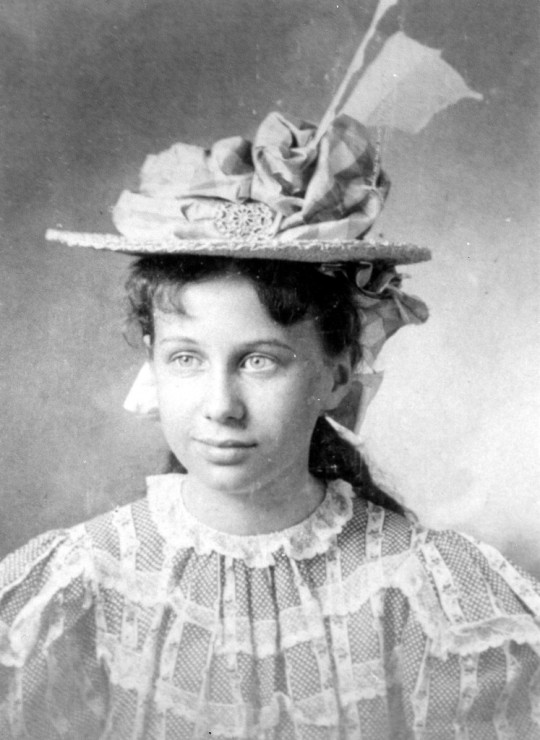
Bess Truman, born on February 13, 1885.
The future First Lady loved hats even as a child. According to her best friend, Mary Paxton, Bess “always looked more stylish than anyone else in the crowd…. Bess had more stylish hats than the rest of us did, or she wore them with more style.”
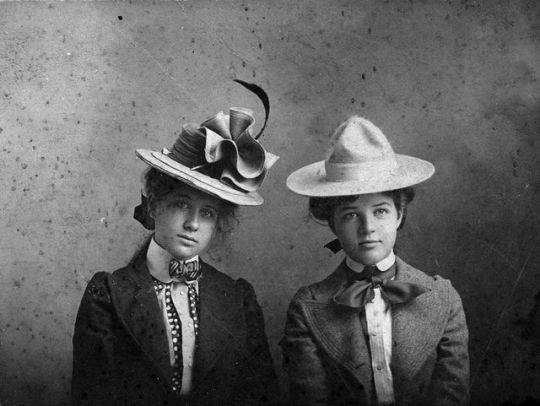

297 notes
·
View notes
Text

Harry S. Truman at Groundbreaking for Truman Library
Collection HST-PHC: Photograph CollectionSeries: Photographs Relating to the Administration, Family, and Personal Life of Harry S. Truman
President Harry Truman smiles for the camera as he digs a shovel into the dirt. He’s surrounded by a smiling crowd.
The Independence Lions Club donated a gold-plated shovel for former President Harry S. Truman (center, foreground) to use at the Harry S. Truman Library groundbreaking at Slover Park in Independence, Missouri. Members of Local 34 of the American Federation of Musicians played at the event. Others in the background are unidentified. Copied from original photographs loaned to the library by Harry Barth. Originals were returned to Mr. Barth.
47 notes
·
View notes
Text
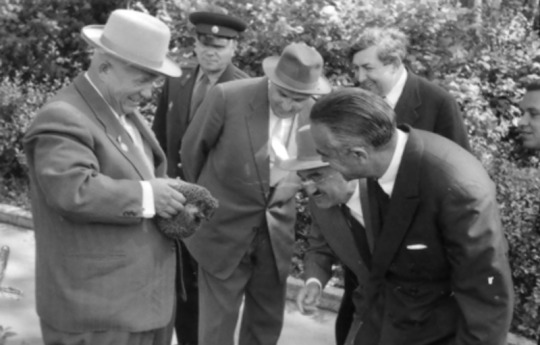
W. Averell Harriman With Nikita Khrushchev During 1959 Trip to the Soviet Union
Exterior view believed to have been taken in the gardens of the government's guest dacha Ogarevo located west of Moscow, Russia. Nikita Khrushchev is on the left holding a hedgehog found along the path. W. Averell Harriman is on the right and Frol Kozlov and Yuri Zhukov are in the center looking at the hedgehog. Photograph appeared with Harriman article published in Life Magazine, July 13, 1959. Charles W. Thayer accompanied Harriman as a guide and confidant on the trip which took place May 12 - June 26, 1959. Harriman went as a special foreign correspondent for the North American Newspaper Alliance (NANA). Trip visits included Moscow, Leningrad, Kiev, Yalta, etc., as well as areas in Siberia and the Urals, and ended with a meeting with Nikita Khrushchev. There is a 2x2 original negative. Credit: Photographer: Charles W. Thayer
This item was produced or created on June 23, 1959.
The creator compiled or maintained the parent series, Photographs Relating to the Administration, Family, and Personal Life of Harry S. Truman, between 1957–2023.
National Archives and Records Administration. Office of Presidential Libraries. Harry S. Truman Library. (4/1/1985 - 7/31/2011)
#hedgehogs#harry s truman#soviet hedgehogs#nikita khrushchev#nikita khrushchev holding a hedgehog#soviet leaders holding hedgehogs#world leaders and hedgehogs#world leaders holding animals#national archives and records administration#office of presidential libraries#harry s truman library
1 note
·
View note
Text

[Eleanor Roosevelt with the Universal Declaration of Human Rights, courtesy of the FDR Presidential Library & Museum, via Wikipedia Commons]
* * * *
LETTERS FROM AN AMERICAN
December 10, 2024
Heather Cox Richardson
Dec 10, 2024
Today is Human Rights Day, celebrated internationally in honor of the day seventy-six years ago, December 10, 1948, when the United Nations General Assembly announced the Universal Declaration of Human Rights (UDHR).
In 1948 the world was still reeling from the death and destruction of World War II, including the horrors of the Holocaust. The Soviet Union was blockading Berlin, Italy and France were convulsed with communist-backed labor agitation, Greece was in the middle of a civil war, Arabs opposed the new state of Israel, communists and nationalists battled in China, and segregationists in the U.S. were forming their own political party to stop the government from protecting civil rights for Black Americans. In the midst of these dangerous trends, the member countries of the United Nations came together to adopt a landmark document: a common standard of fundamental rights for all human beings.
The United Nations itself was only three years old. Representatives of the 47 countries that made up the Allies in World War II, along with the Byelorussian Soviet Socialist Republic, the Ukrainian Soviet Socialist Republic, and newly liberated Denmark and Argentina, had formed the United Nations as a key part of an international order based on rules on which nations agreed, rather than the idea that might makes right, which had twice in just over twenty years brought wars that involved the globe.
Part of the mission of the U.N. was “to reaffirm faith in fundamental human rights, in the dignity and worth of the human person, in the equal rights of men and women and of nations large and small.” In early 1946 the United Nations Economic and Social Council organized a nine-person commission on human rights to construct the mission of a permanent Human Rights Commission. Unlike other U.N. commissions, though, the selection of its members would be based not on their national affiliations but on their personal merit.
President Harry S. Truman had appointed Eleanor Roosevelt, widow of former president Franklin Delano Roosevelt and much beloved defender of human rights in the United States, as a delegate to the United Nations. In turn, U.N. Secretary-General Trygve Lie from Norway put her on the commission to develop a plan for the formal human rights commission. That first commission asked Roosevelt to take the chair.
“[T]he free peoples” and “all of the people liberated from slavery, put in you their confidence and their hope, so that everywhere the authority of these rights, respect of which is the essential condition of the dignity of the person, be respected,” a U.N. official told the commission at its first meeting on April 29, 1946.
The U.N. official noted that the commission must figure out how to define the violation of human rights not only internationally but also within a nation, and must suggest how to protect “the rights of man all over the world.” If a procedure for identifying and addressing violations “had existed a few years ago,” he said, “the human community would have been able to stop those who started the war at the moment when they were still weak and the world catastrophe would have been avoided.”
Drafted over the next two years, the final document began with a preamble explaining that a UDHR was necessary because “recognition of the inherent dignity and of the equal and inalienable rights of all members of the human family is the foundation of freedom, justice and peace in the world,” and because “disregard and contempt for human rights have resulted in barbarous acts which have outraged the conscience of mankind.” Because “the advent of a world in which human beings shall enjoy freedom of speech and belief and freedom from fear and want has been proclaimed as the highest aspiration of the common people,” the preamble said, “human rights should be protected by the rule of law.”
The thirty articles that followed established that “[a]ll human beings are born free and equal in dignity and rights…without distinction of any kind, such as race, colour, sex, language, religion, political or other opinion, national or social origin, property, birth or other status” and regardless “of the political, jurisdictional or international status of the country or territory to which a person belongs.”
Those rights included freedom from slavery, torture, degrading punishment, arbitrary arrest, exile, and “arbitrary interference with…privacy, family, home or correspondence, [and] attacks upon…honour and reputation.”
They included the right to equality before the law and to a fair trial, the right to travel both within a country and outside of it, the right to marry and to establish a family, and the right to own property.
They included the “right to freedom of thought, conscience and religion,” “freedom of opinion and expression,” peaceful assembly, the right to participate in government either “directly or through freely chosen representatives,” the right of equal access to public service. After all, the UDHR noted, the authority of government rests on the will of the people, “expressed in periodic and genuine elections which shall be by universal and equal suffrage.”
They included the right to choose how and where to work, the right to equal pay for equal work, the right to unionize, and the right to fair pay that ensures “an existence worthy of human dignity.”
They included “the right to a standard of living adequate for…health and well-being…, including food, clothing, housing and medical care and necessary social services, and the right to security in the event of unemployment, sickness, disability, widowhood, old age or other lack of livelihood in circumstances beyond [one’s] control.”
They included the right to free education that develops students fully and strengthens “respect for human rights and fundamental freedoms.” Education “shall promote understanding, tolerance and friendship among all nations, racial or religious groups, and shall further the activities of the United Nations for the maintenance of peace.”
They included the right to participate in art and science.
They included the right to live in the sort of society in which the rights and freedoms outlined in the UDHR could be realized. And, the document concluded, “Nothing in this Declaration may be interpreted as implying for any State, group or person any right to engage in any activity or to perform any act aimed at the destruction of any of the rights and freedoms set forth herein.”
Although eight countries abstained from the UDHR—South Africa, Saudi Arabia, and six countries from the Soviet bloc—no country voted against it, making the vote unanimous. The declaration was not a treaty and was not legally binding; it was a declaration of principles.
Since then, though, the UDHR has become the foundation of international human rights law. More than eighty international treaties and declarations, along with regional human rights conventions, domestic human rights bills, and constitutional provisions, make up a legally binding system to protect human rights. All of the members of the United Nations have ratified at least one of the major international human rights treaties, and four out of five have ratified four or more.
Indeed, today is the fortieth anniversary of the U.N.’s adoption of the Convention Against Torture and Other Cruel, Inhuman or Degrading Treatment or Punishment, more commonly known as the United Nations Convention Against Torture (UNCAT), which follows the structure of the UDHR.
The UDHR remains aspirational, but it is a vital part of the rules-based order that restrains leaders from human rights abuses, giving victims a language and a set of principles to condemn mistreatment. Before 1948 that language and those principles were unimaginable.
In a proclamation today, the White House recommitted to “upholding the equal and inalienable rights of all people.” It noted that in the U.S., the Biden administration established “the White House Gender Policy Council to advance the rights and opportunities of women and girls across domestic and foreign policy [and] rejoined the United Nations Human Rights Council to highlight and address pressing human rights concerns.” It has “worked to protect the rights of LGBTQI+ people” and to expand “accessibility for people with disabilities.” Crucially, the administration has also worked to stop the misuse of commercial spyware, which has enabled human rights abuses around the world as authoritarian governments surveil their populations, and to fight back against transnational repression targeting human rights defenders.
At the State Department, Under Secretary of State Uzra Zeya, Assistant Secretary of State Dafna Rand, and Secretary of State Antony Blinken honored eight individuals with the Human Rights Defender Award. The recipients came from Kuwait, Bolivia, the Kyrgyz Republic, Burma, Eswatini, Ghana, Colombia, and Azerbaijan and defend migrant workers, LGBTQ+ individuals, women, democracy.
Their stories underlined both that the fight for human rights is universal and that it requires courage. One recipient’s award was delivered in absentia because he is imprisoned. Another award was posthumous—the recipient was murdered last year.
LETTERS FROM AN AMERICAN
HEATHER COX RICHARDSON
#Human rights#Letters from An American#heather cox richardson#state department#women#UDHR#history#American History#FDR
13 notes
·
View notes
Note
can I ask what your header pic is from?
Hi, yes! There's actually kind of a funny story behind it, and this ask made me finally go looking to see if the game it came from still existed.
Context for anyone else, this is the picture:

It's from a game called "Cold War Dare" that used to be hosted on the George HW Bush Presidential Library website. I found this game in 2017, and did a silly little write up about it on my main blog here where I decided to play the game as if it were a Gorbachev dating simulator (further evidence of my obsession with political dating sims lmao). I made it my header pic because a) I found the idea of sitting down in the Oval Office and selecting the difficulty of your presidency to be funny in an absurd way, and b) it shows the GHWB Oval Office.
Here is a summary of the game as printed in a educational brochure on the GHWB Library site:

In my memory, "Cold War Dare" was a Flash game, and since Flash has been phased out, it doesn't appear to be on the site anymore. I thought it might be lost media or something, and I wanted to try to track it down and upload it to the Flashpoint archive (I already added "True Love: President's Edition," which is actually a dating sim, but we have to wait for an update of Flashpoint for that to go live).
What I did not know back in 2017 was that Cold War Dare was also a phone game?? Looking now, there are APKs of it floating around, and some video examples of gameplay on youtube. Nothing groundbreaking, but I have a soft spot for it because of the memory of sitting in my dorm room and messing around with the scenarios.
Semi-related, the same brochure from above also mentions this:

...which I did not know about back in the day, and am kind of intrigued by, because it makes me think of this article that talks about the culinary make up of White House state dinners since FDR. Some highlights: Truman serving Fritos chips and Nixon ordering fancy wines but shorting the other guests. About GHWB's state dinners, it says:

So mousse better be on the menu in Dinner Dash! Am I willing to download an APK of it from a sketchy site to find out? Maybe??
#sorry for this long-ass answer anon but you activated two of my trap cards#1) talking about ghwb and 2) talking about silly flash games#I do still wonder if somehow the code for the web version of the game could be archived but idk#I'm excited for that dating sim I archived to go live at some point#I'll try to make a post about it when it does#one day I'll learn how to make something like that myself and then it'll be over for me lmao#anon ask#thank you anon#poppy#alexoriginals
2 notes
·
View notes
Text
get to know me
thank you @garunsdottir for tagging me!
Nickname: technically meg is my nickname, but a select few call me mechtilde
Sign: capricorn sun, aquarius moon, taurus rising
Height: 5'2"
The last thing I googled: viola davis in tbosas because i wanted to show my friends the used tampon outfit
Amount of sleep: if i don't get 8 hours i'll go crazy and kill someone
Dream job: I miss being a tour guide, I wish I could live off of that.
Movie/Book that Summarises Me: Spy starring Melissa McCarthy. shan't elaborate.
Favorite instrument: I love the banjo, I've actually always wanted to learn how to play but I don't trust myself with strings.
Aesthetic: constantly straddling the line between "stoner older brother in a '90s movie who saves the day in the third act" and "cringey dad on vacation"
Favorite authors: Nicola Griffith, Hilary Mantel, Carol Goodman, Suzannah Dunn
Random fun fact: When I was 3 my family went to visit the Truman Presidential Library in Independence, Missouri and I somehow got away from my family, past the little chain, and started dancing on Bess Truman's grave. My family is incapable of hearing Bess Truman's name without reminding me of this incident.
I tag @talesfromthecrypts, @spookylestat, @ulfrsmal, @abnerkrill, and anyone else who wants to!
8 notes
·
View notes
Text

President-elect Donald Trump and War Criminal President Barack Obama shake hands after a meeting in the Oval Office, 10 November 2016. Photograph: Win McNamee/Getty Images
US Presidential Transition Meetings Through The Years – In Pictures
It is Traditional in the US for the Outgoing President to Receive the President-Elect at the White House Before their Inauguration to Prepare for a Smooth Transition. Donald Trump Broke with this Tradition in 2020 in Disputing the Election Result. As Trump meets Joe Biden in 2024, we Take a Look Back at Past Transition Meetings
— Matt Fidler | Wednesday 13 November 2024

Top: The president-elect, Donald Trump, and War Criminal & Genocidal President Joe Biden talking in the Oval Office of the White House, 13 November 2024. Photograph: Evan Vucci/AP
Bottom: Two War Criminals: President George W Bush and President-elect Barack Obama meet in the Oval Office, 10 November 2008. Photograph: Eric Draper/Reuters
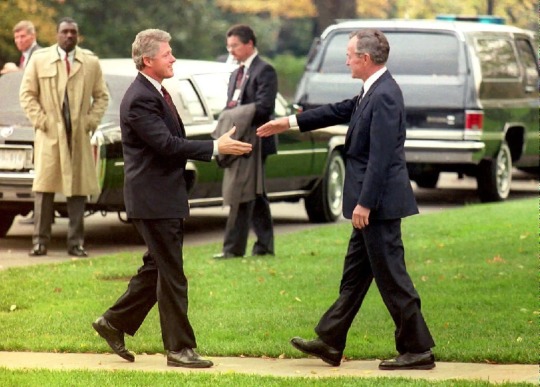
President-elect Bill Clinton is greeted by War Criminal President George Bush (Now Resting, Rotting and Burning 🔥 in Hell Forever) at the White House, 18 November 1992. Photograph: AFP/Getty Images

President-elect War Criminal President George Bush (Now Resting, Rotting and Burning 🔥 in Hell Forever) and President Ronald Reagan, accompanied by their wives, head for the Oval Office, 9 November 1988. Photograph: Bettmann archive

Top: President Jimmy Carter and President-elect Ronald Reagan shake hands in front of their wives on the White House’s South Portico, 20 November 1980. Photograph: Arnie Sachs/Consolidated News Pictures/Getty Images
Bottom: Gerald Ford and Richard Nixon talk in the Oval Office about the transition of power prior to Nixon’s resignation after the Watergate scandal, 9 August 1974. Photograph: Consolidated News Pictures/AFP/Getty Images

Top: President-elect Richard Nixon and President Lyndon B Johnson confer on the orderly transition of power, 12 December 1968. Photograph: AFP/Getty Images
Bottom: President Dwight D Eisenhower greets President-elect John F Kennedy on the North Portico of the White House, 6 December 1960. Photograph: Bettmann archive

Top: Vice-president Harry S Truman and President Franklin D Roosevelt, 1945. When Roosevelt died in office in 1945, Truman took over. Photograph: Universal history archive/Getty Images
Bottom: President-elect Franklin D Roosevelt holds a telegram of congratulations from President Herbert Hoover, 8 November 1932. The transition between Hoover and Roosevelt was not a smooth one, with FDR refusing Hoover’s requests for meetings to calm investors amid a financial crisis. Photograph: Bettmann archive
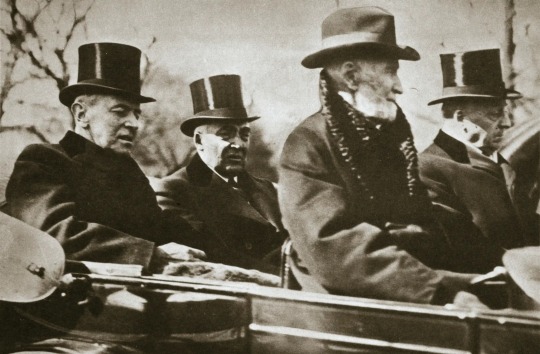
President Thomas Woodrow Wilson, left, and his successor, President Warren G Harding, in the back of a carriage on inauguration day, 1921. Photograph: Historica Graphica Collection/Heritage Images/Getty Images
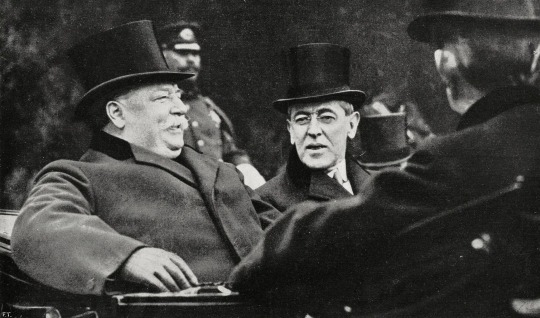
President William Howard Taft (left) and his successor, Thomas Woodrow Wilson, in Washington, 23 March 1913. Photograph: Trampus, from L’Illustrazione Italiana/Bibioteca Ambrosiana/De Agostini/Getty Images

An illustration of the former first lady Julia Dent Grant entertaining President Rutherford B Hayes and his wife at a party in the White House after Hayes’s inauguration, 1877. Photograph: Library of Congress/Corbis/VCG/Getty Images
#US 🇺🇸 News 📰 🗞️#US 🇺🇸 Politics#Miscellaneous Photographs | US Presidents#Gallery#Matt Fidler#US Presidential Transition Meetings#Tradition#Outgoing President#President-Elect#White House#Inauguration#Smooth Transition#Election Result
0 notes
Text

#OTD in #RocklandHistory
Flag Day, 1974
Excerpt from the Journal News
📸Staff photo - Warren Inglese
Sean Lamonzs of Nyack and Susan Roka of Upper Nyack (from left), students at the Upper Nyack Elementary School, raise flag in anticipation of Flag Day ceremony at the school this morning. The occasion was noted by other county schools as well.
🇺🇸 🇺🇸🇺🇸🇺🇸🇺🇸🇺🇸🇺🇸🇺🇸🇺🇸
On June 14, 1777, the Continental Congress approved the design of a national flag.
Since 1916, when President Woodrow Wilson issued a presidential proclamation establishing a national Flag Day on June 14, Americans have commemorated the adoption of the Stars and Stripes in many ways–displaying the flag in the front of their homes, parades, and other patriotic observances. Prior to 1916, many localities and a few states had been celebrating the day for years. Congressional legislation designating that date as the national Flag Day was signed into law by President Harry Truman in 1949; the legislation also called upon the president to issue a Flag Day proclamation every year.
Learn more about Flag Day from the Library of Congress here: https://www.loc.gov/item/today-in-history/june-14
#rockland history#local history#rocklandhistory#rockland county#nyshistory#nys history#orangetown#nyack#hudson river valley#flag day
0 notes
Text
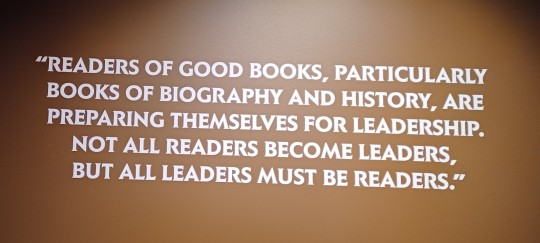
President Harry S Truman, found at his Presidential Library in Missouri
1 note
·
View note
Text

#OTD in 1960, Senator and Democratic presidential candidate John F. Kennedy visited the Truman Library in Independence, Missouri. The former president played piano for him.
trumanlibrary.gov/photograph-rec…
0 notes
Text
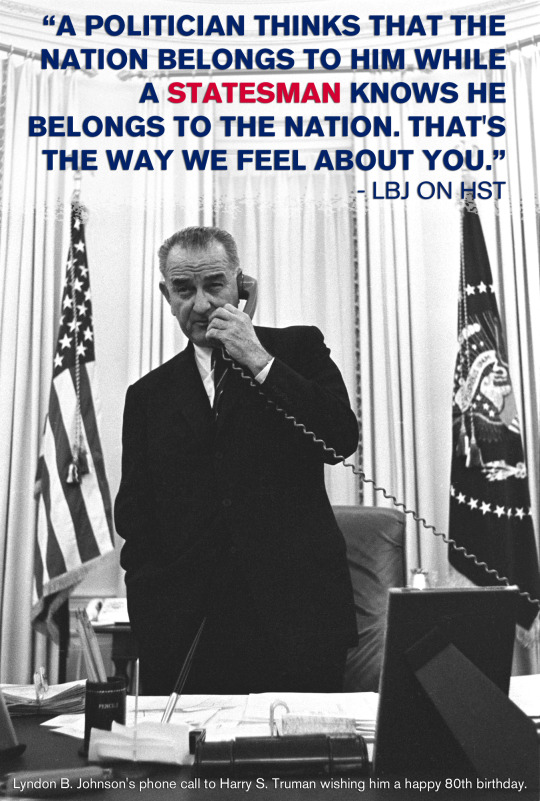
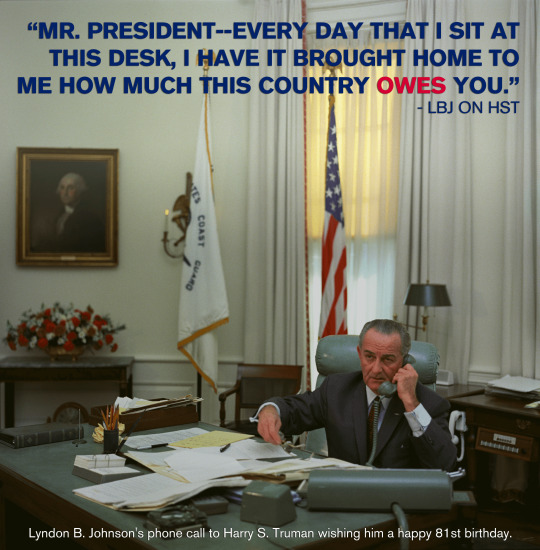
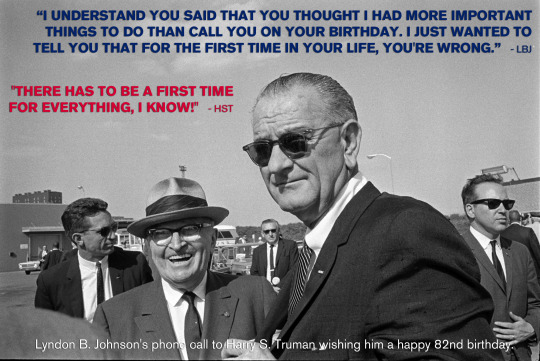
On May 8th of each year of Lyndon B. Johnson's Presidency, LBJ made sure that he made a phone call to the house at 219 North Delaware Street in Independence, Missouri, where former President Harry S. Truman was living in retirement and celebrating another birthday. Truman would always insist that President Johnson had far more important things to do with his time than call a retired old Missouri politician, and LBJ would insist that he couldn't think of anything more important to do with his time than take a moment to thank Harry Truman for his service to the country.
Truman celebrated 88 birthdays before he died on December 26, 1972, nearly four years after Johnson had left the White House and retired to his ranch in Texas. At the time of Truman's death, LBJ was also a very sick man, but he refused to listen to doctors who urged him not to make the trip to Truman's funeral in Missouri.
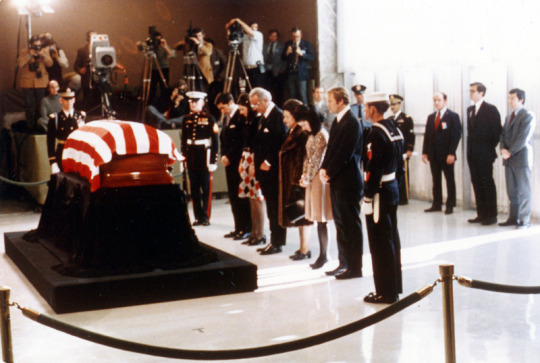
When an ailing Lyndon Johnson bowed his head while paying respect before Truman's casket on December 27, 1972, it was the last time many Americans saw LBJ alive. Lyndon Johnson died less than a month later, on January 22, 1973, and was buried in the family graveyard at the LBJ Ranch in Texas almost one month to the day after he stood next to Harry S. Truman's flag-draped casket in Missouri.
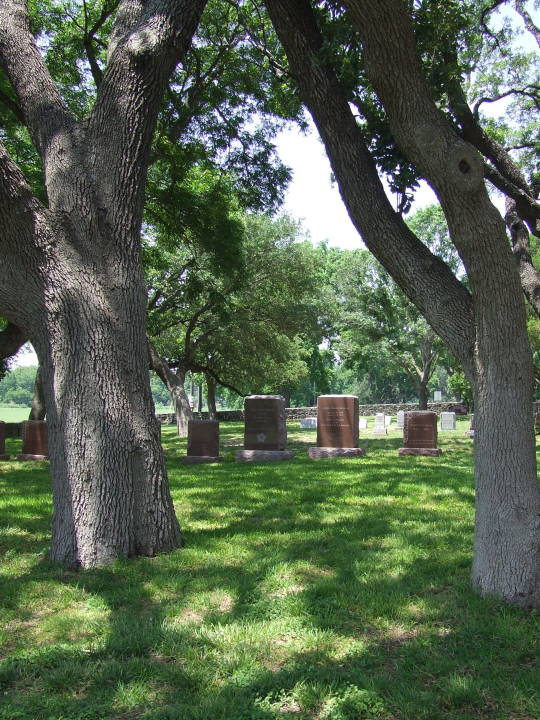
#History#Presidents#Harry S. Truman#Lyndon B. Johnson#LBJ#President Truman#President Johnson#Presidential Relationships#Presidential Friendships#Presidential History#Death of Harry S. Truman#Death of Lyndon B. Johnson#Truman's Birthday#Funeral of Harry S. Truman#Funeral of Lyndon B. Johnson#Truman Library#Harry S. Truman Library & Museum#LBJ Library#LBJ Presidential Library#LBJ Ranch#Presidential Funerals#Presidential Deaths#Political History#Politics
64 notes
·
View notes
Text
A Culinary Journey Through Presidential History 🥪🍰🍽
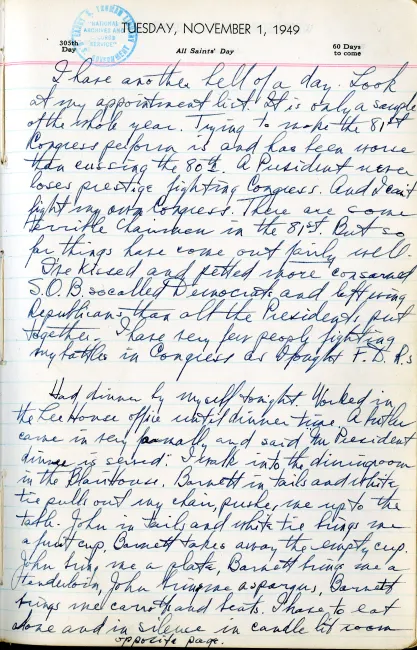
Delving into the culinary history of the White House is a fascinating exploration of taste and tradition. This article embarks on a delicious journey through time, highlighting five remarkable recipes from the kitchens of past U.S. Presidents and First Ladies. These recipes not only offer a taste of history but also reflect the diverse palates and influences that have graced the Presidential table.
Bess Truman's Bing Cherry Mold
Bess Truman, known for her skill and style in the kitchen, contributed a variety of recipes that satisfied many. Among these, the Bing Cherry Mold stands out. This dessert, a perfect blend of sweetness and texture, reflects the simplicity and elegance of the Truman era. Truman had specific dietary preferences, famously disliking onions, and maintaining a healthy diet, but this dessert was a family favorite, indicating a balance between health and indulgence.
Rosalynn Carter's Plains Cheese Ring
Rosalynn Carter's Plains Cheese Ring is a savory delight that hails from the Southern culinary tradition. This cheese appetizer, named after the Carter's hometown in Georgia, is a testament to Rosalynn's commitment to bringing a touch of home to the White House. Its rich, creamy texture paired with the tang of sharp cheddar and the sweetness of strawberry preserves, offers a unique and memorable flavor experience.
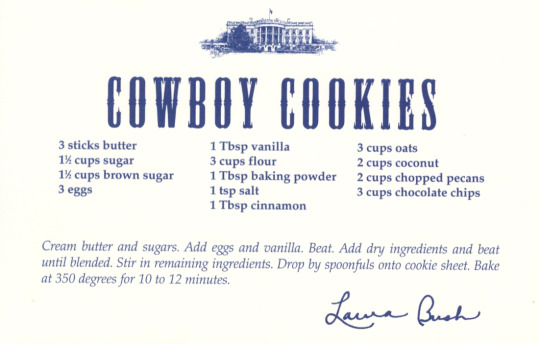
Laura Bush's Cowboy Cookies
First Lady Laura Bush’s Cowboy Cookies are a testament to her Texas roots. These chunky, flavorful cookies, packed with oats, nuts, coconut, and chocolate chips, offer a hearty taste of the American Southwest. They were notably a part of her husband's Presidential campaign, symbolizing warmth and hospitality.
Dwight D. Eisenhower's Apple Pie
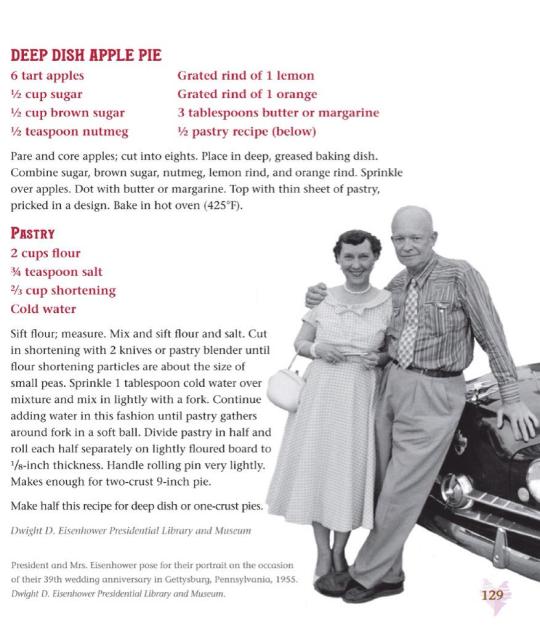
President Eisenhower was not only a leader but also an enthusiastic cook, particularly known for his apple pie. His version of this classic American dessert is said to be a delightful mix of sweetness and spice encased in a perfectly flaky crust. This pie represents Eisenhower's love for simple, home-cooked meals, a contrast to his high-profile public life.
Gerald Ford's Red Flannel Hash
Gerald Ford's Red Flannel Hash is a colorful, comforting dish that combines cooked beets, potatoes, and corned beef. This dish, with its vibrant red hue and hearty ingredients, is a nod to Ford's Midwestern roots and a symbol of the simple, wholesome American fare.
www.fordlibrarymuseum.gov/library/document/0126/1489765.pdf
Exploring these recipes is not just about the flavors and ingredients; it's a journey through the different eras of American history, each dish telling a story of the time and the people in the White House. From the elegance of Bess Truman's desserts to the rustic charm of Laura Bush's Cowboy Cookies, these recipes offer a delectable glimpse into the nation's past, one plate at a time.
Read more:
171 notes
·
View notes
Text
baddest predict,
baddest predict,
Title: The Baddest Predict: A Glance at Failed Projections
Introduction: Predictions are an integral part of human curiosity and planning. Whether it's in the realms of science, technology, politics, or sports, humans have always strived to anticipate and forecast future events. However, not all predictions turn out to be accurate or successful. In this article, we delve into some of the baddest predicts in history that missed the mark and explore the lessons we can learn from them.
Flying Cars: Grounded Dreams: For decades, the concept of flying cars has fascinated the imaginations of people around the world. Popularized by science fiction literature and films, many experts predicted that we would be zipping through the skies in personal flying vehicles by the 21st century. However, despite advancements in technology, the reality of widespread flying cars remains elusive. The challenges of infrastructure, safety concerns, and regulatory hurdles have hindered the realization of this once highly anticipated future.
Y2K Bug: The Millennium Meltdown That Never Was: As the year 2000 approached, widespread fear gripped the world due to the Y2K bug. It was believed that computer systems would collapse, leading to global chaos as they failed to transition smoothly from the 20th to the 21st century. Countless predictions warned of power outages, financial meltdowns, and even potential plane crashes. However, the much-feared catastrophe largely fizzled out, thanks to diligent preparation and corrective measures taken by governments and organizations worldwide.
End of Printed Books: With the rapid rise of e-readers and digital publications, some experts predicted the imminent demise of printed books. They argued that physical books would become obsolete, replaced entirely by their digital counterparts. However, bookstores and libraries continue to thrive, and many readers still cherish the experience of holding a physical book in their hands. While e-books have certainly gained popularity, the demise of printed books has proven to be an exaggerated forecast.
Presidential Election Upsets: Throughout history, presidential elections have witnessed their fair share of incorrect predictions. From the infamous "Dewey Defeats Truman" headline in 1948 to the surprising victory of Donald Trump in 2016, political analysts and pollsters have sometimes misread the mood of the electorate. These unexpected outcomes serve as reminders that predicting human behavior on such a large scale can be a challenging task, influenced by numerous unpredictable factors.
Failed Technological Prophecies: Over the years, experts have made bold claims about the future of technology that have fallen short. Some envisioned that by now, we would have colonies on Mars, artificial intelligence dominating human society, and holographic displays permeating our everyday lives. While progress has been made in these areas, the predicted timelines and scope of transformation were often overly optimistic. It's a reminder that advancements take time, and the realities of implementation often differ from our wildest dreams.
Conclusion: The history of failed predictions serves as a humbling reminder of the complexities and uncertainties of the future. It's essential to approach predictions with a healthy dose of skepticism, recognizing that they are educated guesses at best. Failed predicts can offer valuable lessons, reminding us to be cautious about technological hype, consider unforeseen factors, and acknowledge the limitations of our ability to foresee the future accurately. As we move forward, it's crucial to balance our curiosity for what lies ahead with a realistic understanding of the challenges involved in turning predictions into reality.
0 notes
Text
“I think there’s great concern about the state of our democracy at this time,” said Mark Updegrove, president and CEO of the LBJ Foundation, which supports the LBJ Presidential Library in Austin, Texas. “We don’t have to go much farther than January 6 to realize that we are in a perilous state.” Efforts to suppress or weaken voter turnout are of special interest to the LBJ Foundation, Updegrove said, given that President Lyndon Johnson considered his signing of the Voting Rights Act his “proudest legislative accomplishment.” The bipartisan statement was signed by the Hoover Presidential Foundation, the Roosevelt Institute, the Truman Library Institute, the John F. Kennedy Library Foundation, the LBJ Foundation, the Richard Nixon Foundation, the Gerald R. Ford Presidential Foundation, the Carter Center, the Ronald Reagan Presidential Foundation and Institute, the George & Barbara Bush Foundation, the Clinton Foundation, the George W. Bush Presidential Center and the Obama Foundation.
Now it is time for the former living presidents (except Trump) to issue a statement against Trump, MAGA, and the efforts to undermine our democratic republic.
Trump is a danger to our nation. It is time the other former presidents acknowledged that as a group.
WASHINGTON (AP) — Concern for U.S. democracy amid deep national polarization has prompted the entities supporting 13 presidential libraries dating back to Herbert Hoover to call for a recommitment to the country’s bedrock principles, including the rule of law and respecting a diversity of beliefs.
The statement released Thursday, the first time the libraries have joined to make such a public declaration, said Americans have a strong interest in supporting democratic movements and human rights around the world because “free societies elsewhere contribute to our own security and prosperity here at home.”
“But that interest,” it said, “is undermined when others see our own house in disarray.”
69 notes
·
View notes
Text
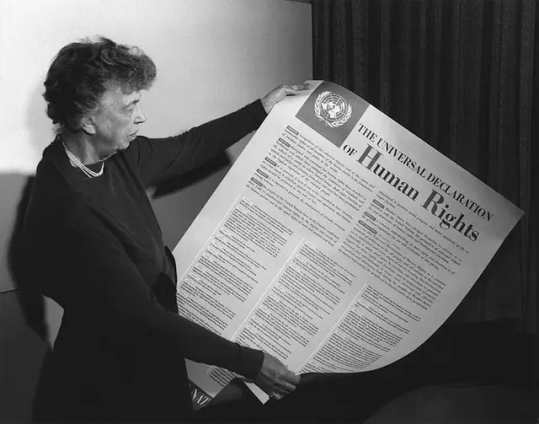
[Eleanor Roosevelt with the Universal Declaration of Human Rights, courtesy of the FDR Presidential Library & Museum, via Wikipedia Commons]
* * *
LETTERS FROM AN AMERICAN
December 10, 2023
HEATHER COX RICHARDSON
Seventy-five years ago today, on December 10, 1948, the United Nations General Assembly announced the Universal Declaration of Human Rights (UDHR).
At a time when the world was still reeling from the death and destruction of World War II, the Soviet Union was blockading Berlin, Italy and France were convulsed with communist-backed labor agitation, Arabs opposed the new state of Israel, communists and nationalists battled in China, and segregationists in the U.S. were forming their own political party to stop the government from protecting civil rights for Black Americans, the member countries of the United Nations nonetheless came together to adopt a landmark document: a common standard of fundamental rights for all human beings.
The United Nations itself was only three years old, having been formed in 1945 as a key part of an international order based on rules on which nations agreed, rather than the idea that might makes right, which had twice in just over twenty years brought wars that involved the globe. In early 1946 the United Nations Economic and Social Council organized a nine-person commission on human rights to set up the mission of a permanent Human Rights Commission. Unlike other U.N. commissions, though, the selection of its members would be based not on their national affiliations but on their personal merit.
President Harry S. Truman had appointed Eleanor Roosevelt, widow of former president Franklin Delano Roosevelt and much beloved defender of human rights in the United States, as a delegate to the United Nations. In turn, U.N. Secretary-General Trygve Lie from Norway put her on the commission to develop a plan for the formal human rights commission. That first commission, in turn, asked Roosevelt to take the chair.
“[T]he free peoples” and “all of the people liberated from slavery, put in you their confidence and their hope, so that everywhere the authority of these rights, respect of which is the essential condition of the dignity of the person, be respected,” a U.N. official told the commission at its first meeting on April 29, 1946. Their work would establish the United Nations as a centerpiece of the postwar rules-based international order.
The U.N. official noted that the commission must figure out how to define the violation of human rights not only internationally but also within a nation, and must suggest how to protect “the rights of man all over the world.” If a procedure for identifying and addressing violations “had existed a few years ago,” he said, “the human community would have been able to stop those who started the war at the moment when they were still weak and the world catastrophe would have been avoided.”
Drafted over the next two years, the final document began with a preamble explaining that a UDHR was necessary because “recognition of the inherent dignity and of the equal and inalienable rights of all members of the human family is the foundation of freedom, justice and peace in the world,” and because “disregard and contempt for human rights have resulted in barbarous acts which have outraged the conscience of mankind.” Because “the advent of a world in which human beings shall enjoy freedom of speech and belief and freedom from fear and want has been proclaimed as the highest aspiration of the common people,” the preamble said, “human rights should be protected by the rule of law.”
The thirty articles that followed established that “[a]ll human beings are born free and equal in dignity and rights…without distinction of any kind, such as race, colour, sex, language, religion, political or other opinion, national or social origin, property, birth or other status” and regardless “of the political, jurisdictional or international status of the country or territory to which a person belongs.”
Those rights included freedom from slavery, torture, degrading punishment, arbitrary arrest, exile, and “arbitrary interference with…privacy, family, home or correspondence, [and] attacks upon…honour and reputation.”
They included the right to equality before the law and to a fair trial, the right to travel both within a country and outside of it, the right to marry and to establish a family, the right to own property.
They included the “right to freedom of thought, conscience and religion,” “freedom of opinion and expression,” peaceful assembly, the right to participate in government, either “directly or through freely chosen representatives,” the right of equal access to public service. After all, the UDHR noted, the authority of government rests on the will of the people, “expressed in periodic and genuine elections which shall be by universal and equal suffrage.”
They included the right to choose how and where to work, the right to equal pay for equal work, the right to unionize, and the right to fair pay that ensures “an existence worthy of human dignity.”
They included “the right to a standard of living adequate for…health and well-being…, including food, clothing, housing and medical care and necessary social services, and the right to security in the event of unemployment, sickness, disability, widowhood, old age or other lack of livelihood in circumstances beyond [one’s] control.”
They included the right to free education that develops students fully and strengthens “respect for human rights and fundamental freedoms.” Education “shall promote understanding, tolerance and friendship among all nations, racial or religious groups, and shall further the activities of the United Nations for the maintenance of peace.”
They included the right to participate in art and science.
They included the right to live in the sort of society in which the rights and freedoms outlined in the UDHR could be realized. And, the document concluded, “Nothing in this Declaration may be interpreted as implying for any State, group or person any right to engage in any activity or to perform any act aimed at the destruction of any of the rights and freedoms set forth herein.”
Although eight countries abstained from the UDHR—six countries from the Soviet bloc, South Africa, and Saudi Arabia—no country voted against it, making the vote unanimous. The declaration was not a treaty and was not legally binding; it was a declaration of principles.
Since then, though, the UDHR has become the foundation of international human rights law. More than eighty international treaties and declarations, along with regional human rights conventions, domestic human rights bills, and constitutional provisions, make up a legally binding system to protect human rights. All of the members of the United Nations have ratified at least one of the major international human rights treaties, and four out of five have ratified four or more.
The UDHR is a vital part of the rules-based order that restrains leaders from human rights abuses, giving victims a language and a set of principles to condemn mistreatment, language and principles that were unimaginable before 1948.
But the UDHR remains aspirational. “As we look at the first 75 years of the UDHR,” Secretary of State Antony Blinken said today, “we recognize what we’ve accomplished in this time, but also know that much work remains. Too often, authorities fail to protect or—worse—trample on human rights and fundamental freedoms, often in the name of security or to maintain their grip on power. Whether arresting and wrongfully detaining journalists and dissidents, restricting an individual’s freedom of religion or belief, or committing atrocities and acts of genocide, violations and abuses of human rights undermine progress made in support of the UDHR. In the face of these actions, we must press for greater human rights protection and promote accountability whenever we see violations or abuses of human rights and fundamental freedoms.
“On its 75th anniversary, the UDHR must continue to be our guiding light as we strive to create the world in which we want to live. Its message is as importa
LETTERS FROM AN AMERICAN
HEATHER COX RICHARDSON
#Letters From An American#Heather Cox Richardson#United Nations#UDHR#Universal Declaration of Human Rights (UDHR)#history#human rights#Eleanor Roosevelt
21 notes
·
View notes